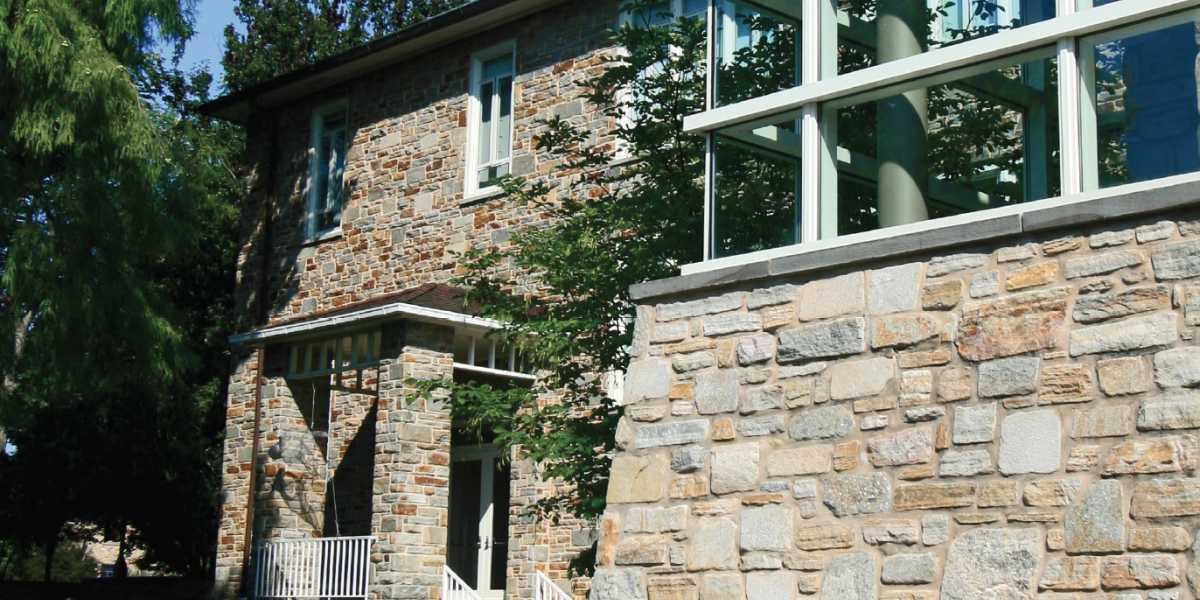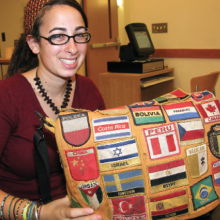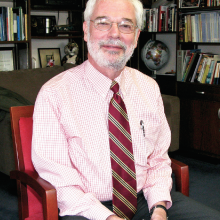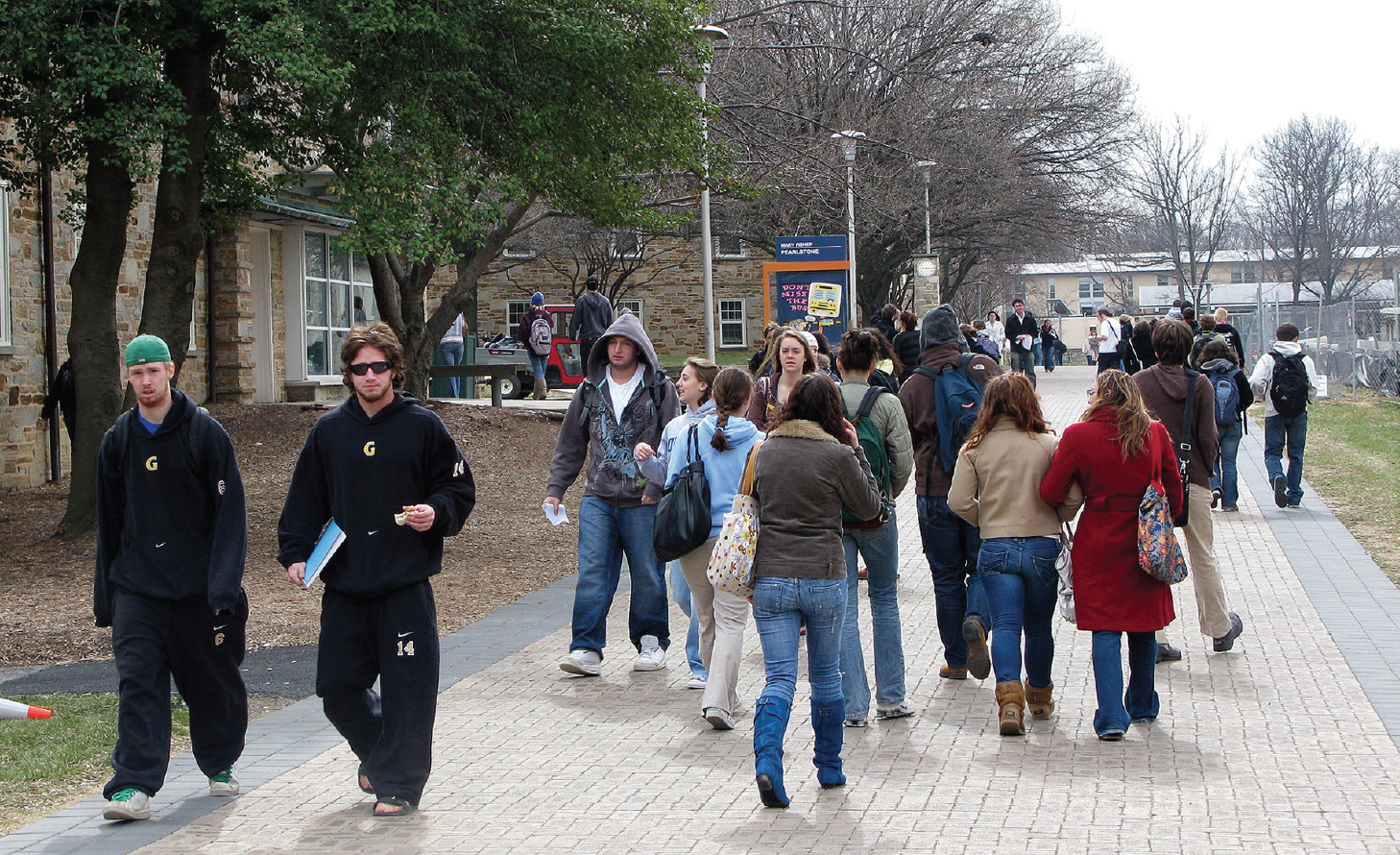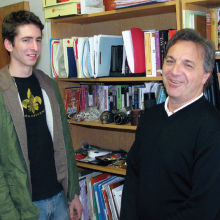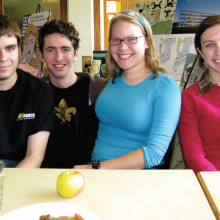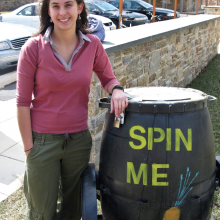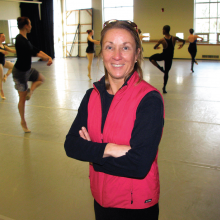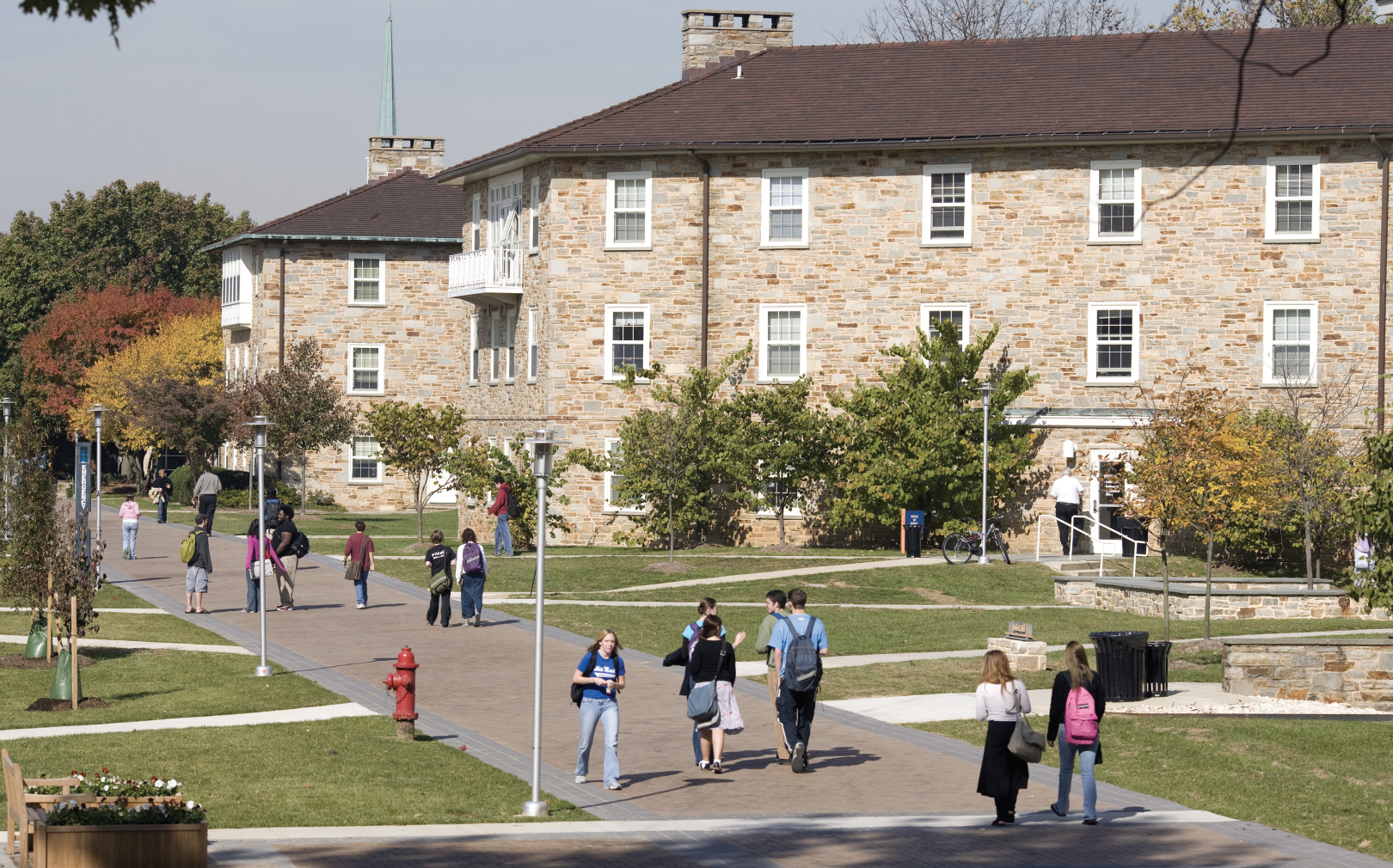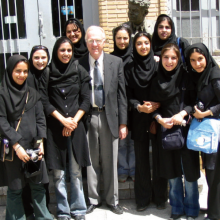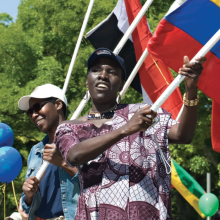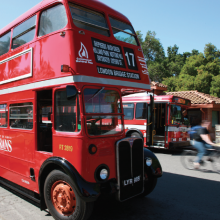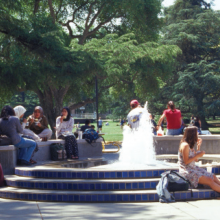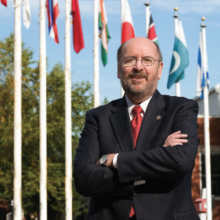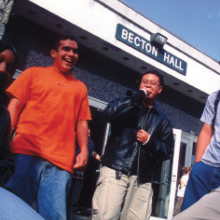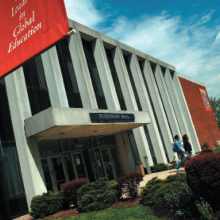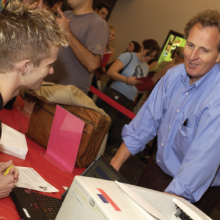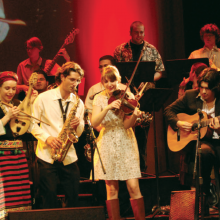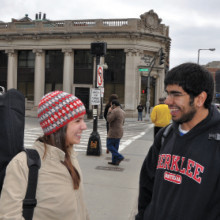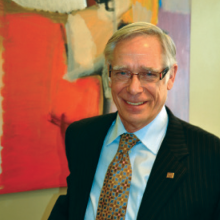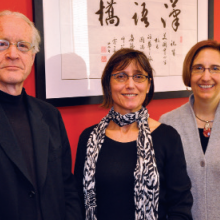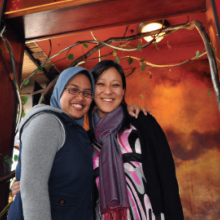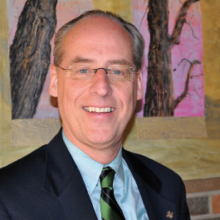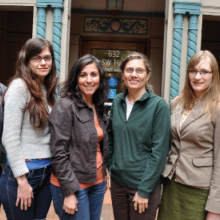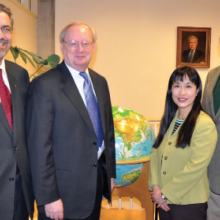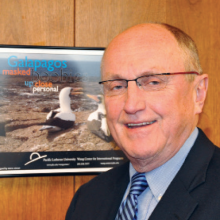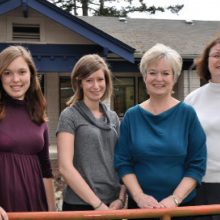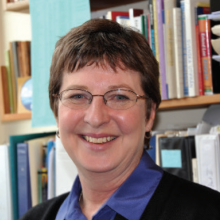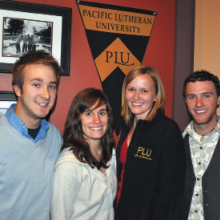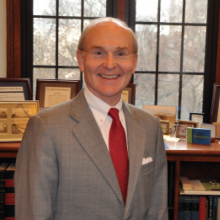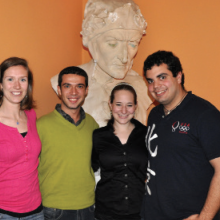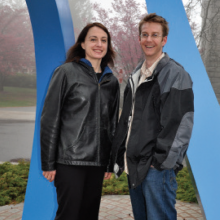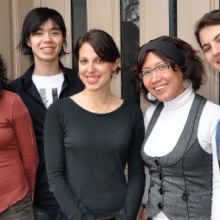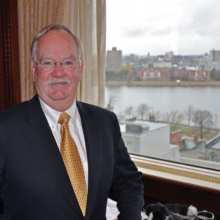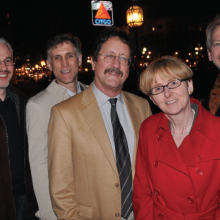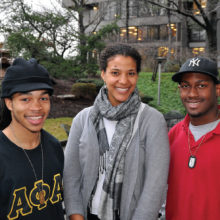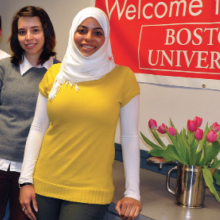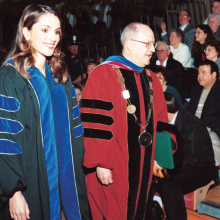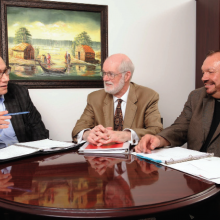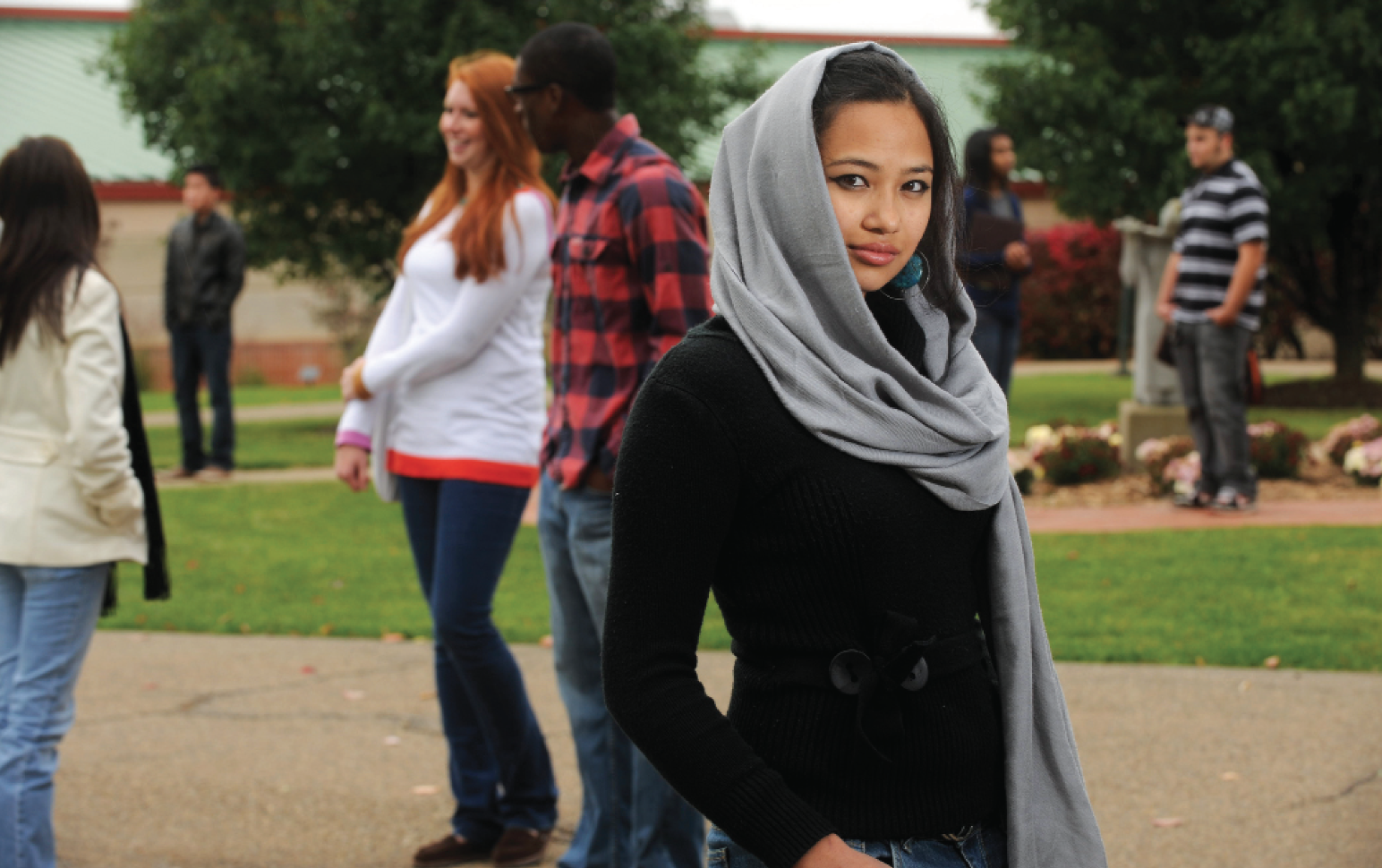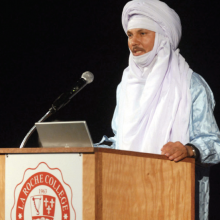2008 Comprehensive Goucher College
Aviva Bergman’s worn yellow satchel doubles as a diary of her adventurous young life: almost every inch is covered with flag patches from the 45 countries where she has studied, volunteered, traveled, and taught.
That’s not counting Namibia, Botswana, and Korea, where the Goucher College senior spent a day or two—not long enough in her book to justify adding a patch to “my sacred bag .” The sociology major speaks Spanish, Portuguese, French, and some Bambara (picked up during a semester in Mali) . Goucher, a sylvan, 290-acre campus outside Baltimore, Maryland, is a place where Aviva found kindred spirits, and more in the making . Starting with the class of 2010, no one will graduate from Goucher without at least one stamp in their passport .
Goucher is the first traditional liberal arts college in the nation to require everyone to have an education abroad experience. President Sanford J. Ungar calls it “shameful” that more Americans don’t spend a portion of their college years studying outside the United States and says flatly, “It’s ridiculous to claim that students are educated if they have not had some international exposure.” Ungar feels he was hired in 2001 “at least in part to retrieve and enhance the college’s international character.” Goucher began in 1885 as the Woman’s College of Baltimore City and was renamed a quarter-century later for one of its founders and second president, the Reverend John Franklin Goucher, a globe-trotting educator and churchman who opened schools, colleges, missions, and hospitals across China, Japan, Korea, and India. He and his wife helped buy the land in Tokyo near the Emperor’s palace on which the Anglo-Japanese College—now Aoyama Gakuin University—was built in 1882, an early recognition “that education is necessarily a global pursuit,” as Ungar said in a 2002 speech on the Tokyo campus.
Goucher went coed in 1986, a move that reversed declining enrollments. It was already trying to ramp up international activities in a 1995 strategic plan; a donor back then made a gift that funds study abroad scholarships for needy undergraduates. But former President Judy Mohraz, said, “Sandy’s just taken it miles farther. He’s made it a signature for the college.” Ungar arrived on campus two months before September 11, an event that convinced many American educators of the urgency of doing a better job of helping students understand the world and those opposed to Western ideals and freedoms.
Ungar admits frankly that he was also looking for something that would separate Goucher from other liberal arts colleges. “It needed something distinctive, and what better thing to distinguish it than this focus on international education?” said Ungar. He also convinced his board that it was the type of “big idea” that would attract both students and donors more than just replacing the campus library. Indeed, the mandate has been prominently featured in a major capital campaign that has allowed Goucher to build a $32 million facility called the Athenaeum that will house a café, fitness center, art gallery and performance spaces, as well as a superior library.
Building Support for the Study Abroad Mandate
The mandate—which requires students to spend at least three weeks in an approved study abroad program or internship in another country—was articulated in a sweeping 2002 strategic plan, Transcending Boundaries of the Map & the Mind. But first Ungar had to convince the faculty to actually make study abroad a requirement, and that took three full years. Some faculty were worried that the small college was rushing into this too fast and without sufficient support for the increased study abroad load. Goucher hired a fourth person for its Office of International Studies, but the burden of encouraging more students to study abroad would fall largely on the faculty. Many opt for three-week, faculty-led study trips overseas in January or the summer, and it takes a significant amount of time and planning to get both the logistics and curriculum right for such intensive courses. Still, the idea captured the fancy of the public and prospective students from the start, even before the mandate took effect for the freshmen who entered in fall 2006.
The faculty deliberated for three years before agreeing to include the education abroad requirement in a larger overhaul of Goucher’s general education requirements in 2005. And starting with the class of 2010, the college began giving every student a $1,200 voucher to partially offset the cost of studying abroad.
Robert Beachy, an associate professor of history, said, “I don’t know that anybody expected (the requirement) to come quite as soon as it did... There was a fair bit of concern about implementing this effectively.” But Beachy, whose field is German history and culture, said he’s been struck by the enthusiasm and creativity of faculty for coming up with new education abroad offerings. “I’m impressed at the number that exists for a relatively small-size faculty. I guess if any school can do this, Goucher probably can because there really is this devoted sort of semi-selfless faculty.” Beachy, who advises eight freshmen and a dozen history majors, believes the college needs to devote more resources to faculty development and to the International Studies office. “Things need to be streamlined,” he said. “Right now it’s a little complicated sometimes figuring out how students get credits or what credits they get exactly. There aren’t enough clear policies in place.”
Some faculty questioned whether Goucher should be providing $1,200 vouchers for everybody, regardless of financial need. Eventually the college will spend almost a half-million dollars a year. But Ungar said more than three-quarters of Goucher’s financial aid is based on financial need. “We’ve cut way back on merit aid and reduced our (tuition) discount rate to 35 from 49.6 percent.”
Ungar said that requiring study abroad was risky. “We were taking a very big plunge. What if students didn’t come? What if people didn’t like the idea?” he said. He needn’t have worried. A flood of applications has put those fears to rest. Four thousand students applied to Goucher for 2007-08, double the number seven years earlier.
Goucher enrolled nearly 1500 undergraduates and more than 800 part-time graduate students in 2007. Goucher has rented nearby apartments to handle the overflow from campus housing.
Even before the mandate, more than half of Goucher seniors had studied abroad by the time they graduated, and that number had risen to 77 percent for the class of 2006 according to Open Doors figures. Some 132 members of the class of 2010 actually used their $1,200 vouchers as freshmen or sophomores. Most were expecting—and expected—to do so as juniors or seniors. Ungar said it will be several years before the results of this experiment are known.
Faculty Play a Critical Role
The most popular and common option for students to fulfill the requirement is to head off with a Goucher professor on one of the three-week intensive courses abroad that are offered during winter break and after the spring term ends. Some of these study abroad classes tied into longer coursework on campus before and/or after the overseas trip. In January and May, faculty lead students to Rio de Janeiro to learn the history of dance in Brazil; to Shanghai and Beijing to absorb Chinese history and philosophy; to Prague to explore the Czech capital’s twentieth-century journey from fascism to communism to capitalism; to Honduras where students dive in coral reefs while learning tropical marine biology; to Accra for an immersion in the arts and culture of Ghana and West Africa.
Still, a sizable minority of Goucher students study abroad for a full semester, an option that has been growing in popularity. And with support from a U.S. Department of Education grant, Goucher has developed several courses that are team taught by language and content experts for seven weeks in the fall, then three weeks overseas, and seven more weeks back on campus. They have ranged from peace studies in Spain, to theater in Paris, and to multicultural education in Costa Rica.
“Those last seven weeks were paradise for me,” said Isabel Moreno-Lopez, assistant professor of Spanish, who taught the 8-credit multicultural education class with Assistant Professor of Education Tami Smith. Moreno encountered resistance when she tried to teach entirely in Spanish before the trip to Costa Rica, but afterward “their attitude changed completely. It was a 100 percent shift. The students loved their experience there and loved the language,” she said. The students slept in tree houses at an environmental hostel in the middle of a rain forest and learned from Bribri Indians about their lives and culture. Back in Maryland, the students could not get enough Spanish. “They wanted more and more and more. They were sad when it ended and asked if they could still meet with me over coffee and discuss books. I still have some of these students coming,” said Moreno-Lopez. “The students you take abroad are students for life.”
“They wanted more and more and more... The students you take abroad are students for life.”
Goucher students are accustomed to a lot of attention from professors, at home and abroad. “Most people that come here were looking for a small, liberal arts school,” said sophomore Royce DuBiner. “I mean, I lunch with my professors and talk with them all the time. After an exam you can walk into their office and they go over it with you right there.” DuBiner, from Atlanta, Georgia, cashed in his $1,200 voucher on a three-week trip to Vietnam last January led by Nicholas Brown, chair of Political Science and International Relations, who showed them the firebase where he served during the war, now a farmer’s field. They journeyed from Ho Chi Minh City (formerly Saigon) to Hanoi, learning about Vietnam’s history and its current social and economic reforms.
Goucher so far has implemented the education abroad mandate by hiring just one additional staff member for what is now a four-person Office of International Studies. Two education abroad advisers, an administrative staffer, and student workers round out the office (visas for Goucher’s international students are handled by the Admissions Office). “It is a small infrastructure,” said Provost Marc Roy, who came to Goucher in 2007. “The faculty is carrying a lot of the burden in terms of advising students. But the staff here is incredibly productive and so far they’ve been able to meet the challenge. I think time will tell us what’s necessary to do. But yes, faculty are carrying a lot of the load, both in terms of designing the intensive courses abroad and some of the logistical preparation for that. We need to find ways to make that less of a burden for faculty.
Political science professor Eric Singer spent eight years as associate dean of International Studies. “My main charge has been to think strategically and work with faculty and department to internationalize our curriculum and our academic programs,” said Singer, who has now relinquished those administrative duties and will resume teaching full-time after a sabbatical. Singer regularly proselytized fellow faculty to teach courses overseas and led several study abroad trips himself to South Africa. He put the arm on LaJerne Cornish, an assistant professor of education, one summer when Singer needed students to teach math in a South African township school.
Cornish found two willing education majors and agreed to take an exploratory trip with Singer to South Africa. Cornish, a Goucher alumna and former assistant principal of a Baltimore middle school, had never been out of the country. “I grew up in Baltimore City and thought I had some conception of poverty, but nothing prepared me for what I saw in South Africa,” she said. For the past four summers, she has led groups of up to a dozen education majors to teach in an overcrowded school in rural Grahamstown, South Africa. She has also raised thousands of dollars to donate books to township schools. “This has really pushed me in unexpected ways,” said Cornish.
Exploring Global Issues
Service, whether in inner city Baltimore, hurricane-ravaged New Orleans, or the slums of Grahamstown, is part of the culture at Goucher. Sophomore Maura Roth-Gormley, 20, of Harrisburg, Pennsylvania, first learned about Goucher in the book, Colleges That Change Lives, by Loren Pope. “I was interested because of Goucher’s international studies program and all the emphasis on service learning,” said the history major and ballet dancer who also teaches yoga.
Roth-Gormley is also in Goucher’s International Scholars Program (ISP), which places students in special seminars exploring global issues during their first three semesters and requires them to take one language class beyond the intermediate level and to study abroad for at least a semester. The ISP students get $3,000 vouchers. RothGormley already has been to South Africa on a three-week course, and plans to return for a full semester on an exchange with Rhodes University in Grahamstown. “When I talk to people at other colleges, I’m always kind of shocked” how few plan to study abroad, she said. “When I say I’ve already studied abroad and plan to do so again, they say, ‘Well, that’s interesting. I’d love to do that—but I probably won’t.’” Still, the ISP, which started in 2005, isn’t everyone’s cup of tea, with prescribed courses and a long research paper. Forty students in the class of 2010 signed up for ISP as freshmen; half had left the program before the third semester’s end.
But others love it. The study abroad mandate “is why I came to Goucher,” said sophomore Debra Linik of Woodstown, New Jersey. Linik, a political science and international relations major, extolled a seminar in which her class explored how the Maryland crab industry has gone global. Phillips Seafood Company, which started on the boardwalk in Ocean City, now operates seafood canning plants in Indonesia, Thailand, the Philippines, India, Malaysia, Vietnam, and China, and relies on migrant labor from Mexico to staff its crab-packing houses on the Chesapeake Bay.
Steven DeCaroli, an associate professor of philosophy who has led classes to China and Greece, said that at Goucher, “You can pick up the phone and talk to the person in charge and get something done on a first-name basis. There’s not a lot of bureaucracy to go through.”
Antje Rauwerda, an assistant professor of English who was raised in Singapore where her Dutch father was a petroleum geologist, partnered with DeCaroli on that first China trip. Rauwerda said of the education abroad mandate, “As with any big change, there are little bumps; there are little parts of implementing this that are awkward. But I think it will change the feel of the campus community,” and once the students start “cross-pollinating” their experiences in China or Mali or Ireland, “it’s going to be really interesting.”
Lindsey Hendricks, 20, a junior biology major from Bar Harbor, Maine, said the study abroad mandate is attracting “a different crowd” to Goucher. “I can remember in my freshman year a lot of people didn’t want to study abroad or even do an offcampus internship. You don’t hear that any more,” said Hendricks, who took a tropical marine biology class in Honduras and journeyed to London to study immigrant cultures in the East End. Hendricks is a leader of an agricultural co-op that tends large com posting bins around campus, harvesting leftover vegetables from the cafeteria daily.
Sophomore Anndal Narayanan, 19, a French and history major from Delray Beach, Florida, is spending her junior fall semester at the Sorbonne in Paris. She, too, learned about Goucher from Colleges That Change Lives. “The international study requirement was really the clincher,” said Narayanan. The requirement “explains why the freshman class was the biggest that Goucher’s ever had,” said Narayanan, who recently received honors for her freshman ISP paper comparing the 1968 student takeover at Columbia University in New York to the riots at the Sorbonne.
Greater Student Engagement
J. Michael Curry, former vice president and academic dean, believes the study abroad mandate is bringing in students who are more “engaged, thoughtful, open to new experiences, (and) aware of the world.” And while some choose Goucher because of the safe, suburban campus, the mandate also serves notice that Goucher “will push them out of the comfort of the nest,” he said.
The responsibility for ensuring that a student goes abroad really rests with the students themselves, but the faculty “have a responsibility for getting the conversation started,” said Associate Dean Janine Bowen.
Laura Burns, an assistant professor of art who teaches photography, said this is “a big time of transition” for both faculty and students. “It is very new in terms of advising. It’s new in terms of figuring out who’s on campus and who’s not. It’s new in terms of figuring out how difficult it becomes for students to meet their requirements here and yet go abroad,” said Burns, who has led classes to study life on the border shared by El Paso, Texas, and Ciudad Juarez, Mexico.
“I see a huge, huge change in international awareness and knowledge on the part of both students and faculty.”
“So far it seems to be working quite well,” Burns added. “The students I’ve been talking with are good planners. It’s making them plan a little bit more into the future, having to sort of sit down and say, ‘O.K., this class is available this semester; if I’m gone this semester, then I need to do X, Y, and Z.’ It means that people are tending to write out a four-year plan as opposed to a semester- bysemester plan.”
Marianne Githens, professor of political science and one of the longest serving faculty members— she arrived in 1965 fresh from finishing her Ph.D. at the London School of Economics—believes Goucher “is going through a real renaissance.” Students in her “Women in Politics” class were more familiar with Ségolène Royal and her campaign for president of France than an earlier generation would have been. “That’s one of the wonderful products of internationalizing here at Goucher,” said Githens.
From Dance to Lacrosse—Integrating Study Abroad
Kaushik Bagchi, an associate professor of history, and Amanda Thom Woodson, professor of dance, have teamed to lead students on five trips to Ghana and one to India. “When I came here 15 years ago, mine was one of the few international voices on campus. I was an international specimen on campus. That is no longer the case. I see a huge, huge change in international awareness and knowledge on the part of both students and faculty,” said Bagchi, who is from Delhi.
“We do a lot of drumming and dancing” on the Ghana trip, said Bagchi. “Some people may think, ‘That’s not for me.’ But in the villages we visit, music and dance are completely integrated into everyday life and politics.” The students also learn the history of the slave trade and visit the forts and castles built by the Portuguese and Dutch traders.
Woodson also takes dance students to Brazil to study music and dance. Sometimes, she will hear from a student that her parents “will not pay for them to go on a dance international exchange program because they are not ‘learning anything.’ I explain to the parents that this is not purely about dancing. It is a cultural experience.” Woodson, a native of Edinburgh, Scotland, grew up in a military family in Malta, Germany, and Singapore.
Goucher’s dance program has never lost the luster it enjoyed when it was a women’s college. Goucher also has a strong equestrian program, with its own stable of horses. Its athletic teams compete in NCAA Division III, with no athletic scholarships. Thomas L. Till, swim coach and assistant athletic director, said coaches understand that at Goucher, academics comes before athletics even if that means a star athlete may miss a season while studying abroad. Women’s lacrosse was short three players last spring because several players were overseas. “As a coach, you deal with these—I don’t want to call them frustrations, but little setbacks. You can’t fault the kids because they’re getting these great experiences. And it’s neat to see the transformation when they come back,” said Till.
Comfortable Out on a Limb
Ungar grew up in Wilkes Barre, Pennsylvania, the son of grocers who immigrated from Eastern Europe. He went to Harvard, wrote for the Crimson, and thought his future might be in the law and small town politics. But “the world just opened to me” after he won a Rotary Foundation Fellowship to the London School of Economics and became a foreign correspondent in Paris and Nairobi.
He also spent a summer working for the English language Argus newspapers in Johannesburg, Durban, and Cape Town, seeing apartheid at its worst. Later he wrote books on Africa, the FBI, the new wave of immigrants, and other topics; hosted National Public Radio’s All Things Considered; became dean of the communications school at American University; and was director of the Voice of America from 1999 to 2001.
His vision for international education permeates all matters, large and small, at Goucher. When a Maryland community organization came by to solicit an institutional membership fee costing $7,200, Ungar instantly did the math in his head. “That’s six stipends for students to go overseas,” he said. “You have a high threshold to tell me that that’s more important than putting the money into sending six students overseas.”
The study abroad mandate has earned Goucher waves of publicity. A recent feature in The Chronicle of Higher Education took note of some grumbling among the faculty, but gave Ungar the last word. “I’m comfortable being out on this limb,” he said.
Ungar amplified on those thoughts. “One of the challenges is to bring faculty along in all disciplines and help them see that the international component of things is not a luxury but a growing necessity. It’s understandable that some people would have reservations and concerns, especially because to them in some cases they feel, ‘If I’m going to make room for an international component…then what has to go? What is it going to replace?’” he said. “The answer in my view is that curriculum has always changed and will always change.”
To campuses thinking of following Goucher’s example, Ungar offered this advice: “Make sure that there are lots of new programs in the cooker, lots of new ideas for study abroad programs, both short- and long-term ones. I might urge that people do that a little bit sooner than we did.”
Institutions also need to collaborate more on the courses and classes they take overseas. “No doubt everybody wants to do something unique and have programs that reflect the character of each individual institution. There’s nothing wrong with that,” said Ungar. “But I think everybody needs to learn a little bit more about group play.”

